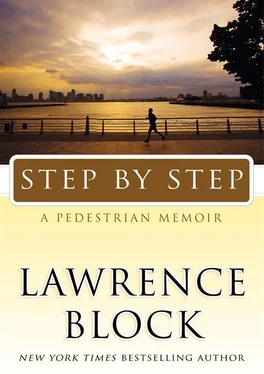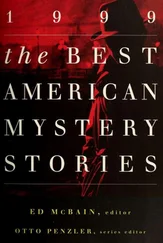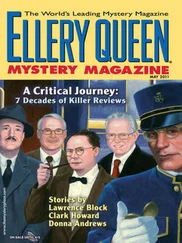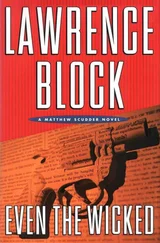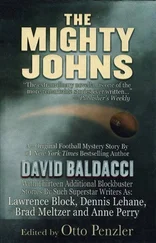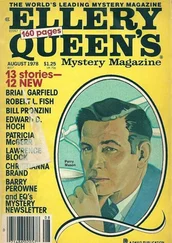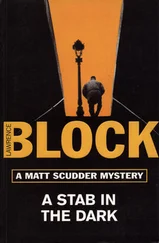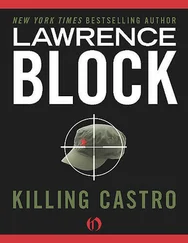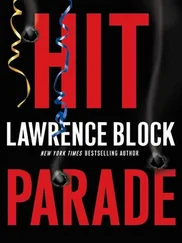Lawrence Block - Step by Step
Здесь есть возможность читать онлайн «Lawrence Block - Step by Step» весь текст электронной книги совершенно бесплатно (целиком полную версию без сокращений). В некоторых случаях можно слушать аудио, скачать через торрент в формате fb2 и присутствует краткое содержание. Год выпуска: 2009, ISBN: 2009, Издательство: William Morrow, Жанр: Биографии и Мемуары, Юмористические книги, на английском языке. Описание произведения, (предисловие) а так же отзывы посетителей доступны на портале библиотеки ЛибКат.
- Название:Step by Step
- Автор:
- Издательство:William Morrow
- Жанр:
- Год:2009
- ISBN:978-0-06-172181-6
- Рейтинг книги:3 / 5. Голосов: 1
-
Избранное:Добавить в избранное
- Отзывы:
-
Ваша оценка:
- 60
- 1
- 2
- 3
- 4
- 5
Step by Step: краткое содержание, описание и аннотация
Предлагаем к чтению аннотацию, описание, краткое содержание или предисловие (зависит от того, что написал сам автор книги «Step by Step»). Если вы не нашли необходимую информацию о книге — напишите в комментариях, мы постараемся отыскать её.
bestselling author comes a touching, insightful, and humorous memoir of an unlikely racewalker and world traveler.
Step by Step — читать онлайн бесплатно полную книгу (весь текст) целиком
Ниже представлен текст книги, разбитый по страницам. Система сохранения места последней прочитанной страницы, позволяет с удобством читать онлайн бесплатно книгу «Step by Step», без необходимости каждый раз заново искать на чём Вы остановились. Поставьте закладку, и сможете в любой момент перейти на страницу, на которой закончили чтение.
Интервал:
Закладка:
But I ran more than half of each of those races. And the one marathon I’d walked, in London, I’d gone over the five-hour mark by almost a full minute per mile.
This wasn’t going to be a walk on the beach.
In order to qualify for the jacket, I’d have to walk the Jersey Shore at a pace a little faster than 11:30 per mile. Did I have a shot at it?
A week after the New York Marathon, I entered an 8K Halloween race in Central Park. It was the same race I’d run the previous year, in 46:50, and this time I walked it in 55:47. Eight kilometers is about as close as you can get to five miles, so my pace was roughly 11:10 minutes per mile, which would bring me across the Jersey finish line with a few minutes to spare.
But that assumed I could sustain my five-mile pace for a whole marathon. The thing about a marathon is that it’s long enough for its sheer distance to be a factor. I wasn’t worried about hitting the wall. Unless you’re an elite runner, stacking up five-minute miles, there’s no wall out there for you to hit; that only happens to runners who move fast enough to deplete their glycogen stores, while the rest of us are burning a certain amount of stored fat in our less highly tuned engines. But you don’t have to hit a wall to slow down some over the course of that long a race.
The longest race I’d walked start to finish was the Mike Hannon Memorial, that twenty-mile effort that had been my first race as a walker. My time of 4:09 worked out to a little over twelve minutes a mile, a pace that would get me across the finish line twenty minutes too late for a jacket.
Hmmm.
Well, that had been my first race as a walker. A month later I’d walked from Coney Island to Prospect Park in the Brooklyn Half-Marathon, and my time had been a brisk 2:22:25. I didn’t have to calculate the pace; all I had to do was double the time, and I’d knock off the marathon in 4:44:50.
Suddenly it was all looking very achievable. On the other hand, my best time running a half marathon was 1:54 in Oregon, and did that mean I could run a full marathon in under four hours?
Not too likely. What it boiled down to, really, was that I didn’t know how long it would take me to walk the marathon, and wouldn’t know until I did it. I’d have to push all the way, I’d have to maintain for the entire distance a pace not much slower than I could manage in a short race. All I could do was try, and five hours after the race began I’d find out whether or not it worked.
I had two more races coming up before the Jersey Shore, a 10K in Buffalo’s Delaware Park and a five-mile Turkey Trot Thanksgiving weekend in Washington, D.C. Most of my training all that month consisted of racewalking along the Hudson, but I ran in both of those races, and in the Turkey Trot my time was 39:05. That was the fastest I’d ever run at that distance.
And it was a mark that would stand up. Because, as it turned out, it was my final race as a runner.
Right up to the start of the Jersey Shore Marathon, I wasn’t entirely sure whether I’d run or walk. Common sense suggested that I play it safe. If I started out with ten or twelve miles of running, I could pretty much guarantee that I’d go home with a jacket. I’d been well under five hours in my last three marathons, and I could expect to do as well in this one.
First things first, I told myself. Just do what you have to do to get the jacket. There will be other marathons, other chances to prove yourself as a walker.
But I wanted to walk this race, wanted to respond to the challenge. Because that’s what it was — a challenge, a test. How could I fail to accept it?
So I took a bus to Red Bank, spent the night at a hotel, showed up at the start the next morning, and set out walking. I don’t remember much about the race. I pushed hard from the beginning, and there was a point where it seemed to me that I had a shot at finishing in under five hours, but it was never a foregone conclusion. I was under two and a half hours at the 13.1-mile point, but not by much.
I didn’t get faster toward the end of the race, but I didn’t get all that much slower, either. There were a few other walkers in the race, some of whom I recognized from Central Park, and one thing I remember vividly is passing one of them — a faster, stronger racewalker than I — with two or three miles to go. He gave me a wave and a thumbs-up, and I passed him and kept going and began to think I was actually going to make it.
I did, with an official time of 4:53:28. They handed me a jacket, and I put it on and took a bus back to the city.
I wonder whatever happened to that jacket. I don’t think I wore it more than three or four times over the years, but I liked having it, even during all those years when the only walking I did was down to the corner to mail a letter.
Now and then I’d come across it in a closet, and I’d recall the circumstances of earning it, the urgent push to the finish line, the sense of triumph that came of having done what I’d set out to do. So of course I kept the jacket, and I’m sure I own it now, although I’m damned if I know where it is.
It was around this time that I first became aware of the twenty-four-hour race.
I was beginning to realize that there were longer races than marathons, and that some runners actually put themselves through events of fifty or a hundred kilometers or fifty or a hundred miles. That seemed crazy to me, but no crazier than a marathon had seemed to me not all that long ago.
And then I read about a twenty-four-hour race, and how walkers who completed a hundred miles or more within twenty-four hours could achieve recognition as Centurions. Such a race, I learned, was held annually on a quarter-mile oval track. You circled it four hundred times and the prize was yours.
That prize, the article went on to report, was apt to go to an older competitor. Youth seemed to be less and less of a factor the greater the distance raced, with marathons frequently won by runners who’d be too old for top honors in a shorter race. This was even more pronounced in ultras, and the racewalker who then held the U.S. record in the twenty-four-hour event had taken up the sport in his late fifties, and was over sixty at the time of his record-setting performance.
In fact, the writer suggested, a younger person might be at a considerable psychological disadvantage. When you’re twenty years old, and when you’ve walked ten times around a track and realize you have 390 laps to go, it’s only natural to say the hell with it and figure you can always try again next year. But when you’re past sixty, you realize you’ve got a limited number of next years, and you’re by no means getting stronger by the minute. So you’re that much more inclined to stay with it while you’ve still got the chance.
It was appealing, I must say. I wasn’t fast and I wasn’t strong, but I did seem to be reasonably good at finishing what I set out to do. You’d have to average a little better than fifteen minutes a mile to cover the distance in the allotted time, and my cruising pace in marathons was a good deal faster than that. Of course this meant doing three marathons and most of a fourth, one right after the other, and somewhere in the course of doing all that, some alarmist might see fit to rush me to the hospital. But if I started training now, and built up the miles slowly but surely...
Well, i didn’t start training for a Centurion event. I figured I had plenty of time before I hit sixty. But you’d think, wouldn’t you, that my performance in the Jersey Shore race would have had me racing more than ever in the months that followed.
That’s not what happened. I did fit in a ten-mile race in Central Park later that month, and racewalked it, but in 1982 I didn’t enter a single race until the middle of June. I managed two races in July, three in August, and three in October, racewalking all of them — and I didn’t participate in a single race after that for over twenty years.
Читать дальшеИнтервал:
Закладка:
Похожие книги на «Step by Step»
Представляем Вашему вниманию похожие книги на «Step by Step» списком для выбора. Мы отобрали схожую по названию и смыслу литературу в надежде предоставить читателям больше вариантов отыскать новые, интересные, ещё непрочитанные произведения.
Обсуждение, отзывы о книге «Step by Step» и просто собственные мнения читателей. Оставьте ваши комментарии, напишите, что Вы думаете о произведении, его смысле или главных героях. Укажите что конкретно понравилось, а что нет, и почему Вы так считаете.
